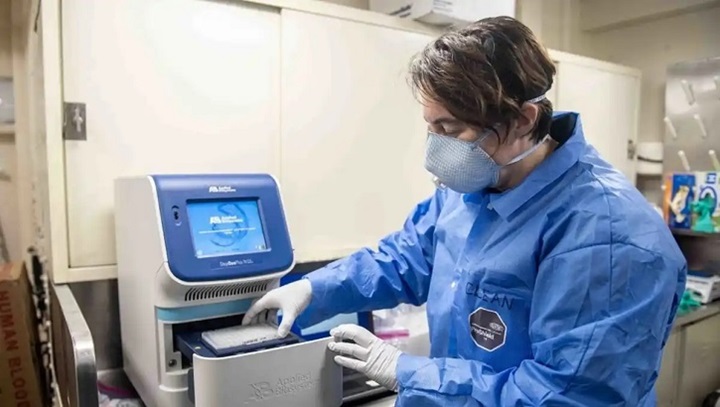
Written by Alexis Gkantiragas
Covid-19 is the largest pandemic since the spanish flu, with over 3 million cases and over 200 thousand deaths at the time of writing (1). That is, according to reported figures. In reality, testing is scarce in many countries and testing the dead (post mortem) is not carried out routinely in all countries due to strains on health systems (2). As a result, both the number of cases, and the number of deaths, are likely to be an underestimate. Yet, having accurate data on the total number of cases and deaths is of the utmost importance when it comes to preparing for future pandemics.
As such, once the smoke of this pandemic has cleared – the European Union would be expected to establish an investigation into the number of deaths and cases across its entire jurisdiction. It would be prudent to spend considerable time calculating and publishing official figures, given that individual member states will likely adopt different metrics, and these may be subject to politically motivated alteration. Furthermore, there are several clear ambiguities which should be standardised for.
Firstly, is a positive test for SARS-CoV-2 post-mortem always to be counted as a covid-19 mortality? Clearly, if the individual has died in a car accident – this cannot be the case. Similarly, if a patient with terminal cancer dies and tests positive for the coronavirus, should this patient be counted in official death statistics? I would suggest that except in cases of obviously unrelated deaths, any positive test post-mortem should be regarded as a covid-19 induced death. While it is surely possible to die with covid-19 as opposed to because of it, it is likely to be, at the very least, a contributing factor.
Similarly, are all deaths caused by covid-19 to be considered in the death statistics? Is a patient who dies due to lack of access to chemotherapy as a result of covid-19, to be counted in deaths statistics? I would argue that while this death would have been caused by the pandemic, it is not relevant from an epidemiological point of view. That is, it won’t help us better understand the virus or how to handle pandemics. So, while these figures should certainly be measured and published, they may not be relevant to include in official virus death statistics. By way of analogy, is a cancer patient who dies of seasonal flu to be counted as a cancer death, flu death or both?
Secondly, if each member state has adopted different frequency of testing – how can the total number of cases be estimated? While Iceland adopted a system of random testing, the United Kingdom was until fairly recently primarily only testing those admitted to hospital (3). I would tentatively suggest that testing of active cases will not be particularly useful for comparing across jurisdictions. These should instead be calculated based on the number of deaths, or in studies randomly testing members of the general public.
A particularly useful way of measuring death rates and subsequently, total case numbers, might be to find areas where almost all the population has gotten covid-19. For example, if randomised testing in a small-town yield 80% or so positive tests, then calculating the mortality rate based upon the total deaths in that area might be a useful way to generate an accurate impression of death rates.
Finally, there is the issue of post-mortem testing itself. Should everyone who dies within the pandemic period be tested? I would argue that anybody who was presenting with symptoms prior to their death should be tested. There has been a great deal of heterogeneity in the way this disease has manifested itself – so it is probably best to test unless there is no reason at all to suspect covid-19 as the killer. If testing kits themselves are in short supplies, these could be conducted retrospectively from the patient’s frozen blood samples.
It is worth noting that this is by no means an exhaustive list of the issues we will encounter with death and case statistics. Therefore, it is essential that these statistics, and the accompanying raw data itself, is made publicly available to have as many expert eyes to critically analyse it as possible. Another factor to consider is that if official data is not made available, misinformation is liable to fill the void.
While for those scared right now or following the news closely, it may seem as if this pandemic will never end, there will be a day when we have to reckon with the devastation wrought by this virus. When that day comes, we must have a concrete plan for how to dissect, analyse and disseminate the results.
References
Coronavirus COVID-19 (2019-nCoV) [Internet]. [cited 2020 May 5]. Available from: https://gisanddata.maps.arcgis.com/apps/opsdashboard/index.html#/bda7594740fd40299423467b48e9ecf6
Mega M. Post-mortems no longer required for those who die of coronavirus in Scotland – Daily Record [Internet]. Daily Record. 2020 [cited 2020 May 5]. Available from:https://www.dailyrecord.co.uk/news/scottish-news/post-mortem-delays-set-up-21849347
Bjarnason, E. (2020). Iceland Has Tested 13% of Its Entire Population for Coronavirus. Here’s What Health Authorities Found. TIME. Retrieved 9 May 2020, from.

 The ’Ndrangheta’s Infiltration and Threat to European Institutions
The ’Ndrangheta’s Infiltration and Threat to European Institutions  From Paper to Practice: How Grassroots Norms Undermine Gender Rights in Pakistan
From Paper to Practice: How Grassroots Norms Undermine Gender Rights in Pakistan  Exploited Childhoods: The Role of Global Corporations in Perpetuating and Mitigating Child Labour
Exploited Childhoods: The Role of Global Corporations in Perpetuating and Mitigating Child Labour  Human Rights Challenges in Addressing SLAPPs in Media, NGOs and Journalism in the EU
Human Rights Challenges in Addressing SLAPPs in Media, NGOs and Journalism in the EU 


